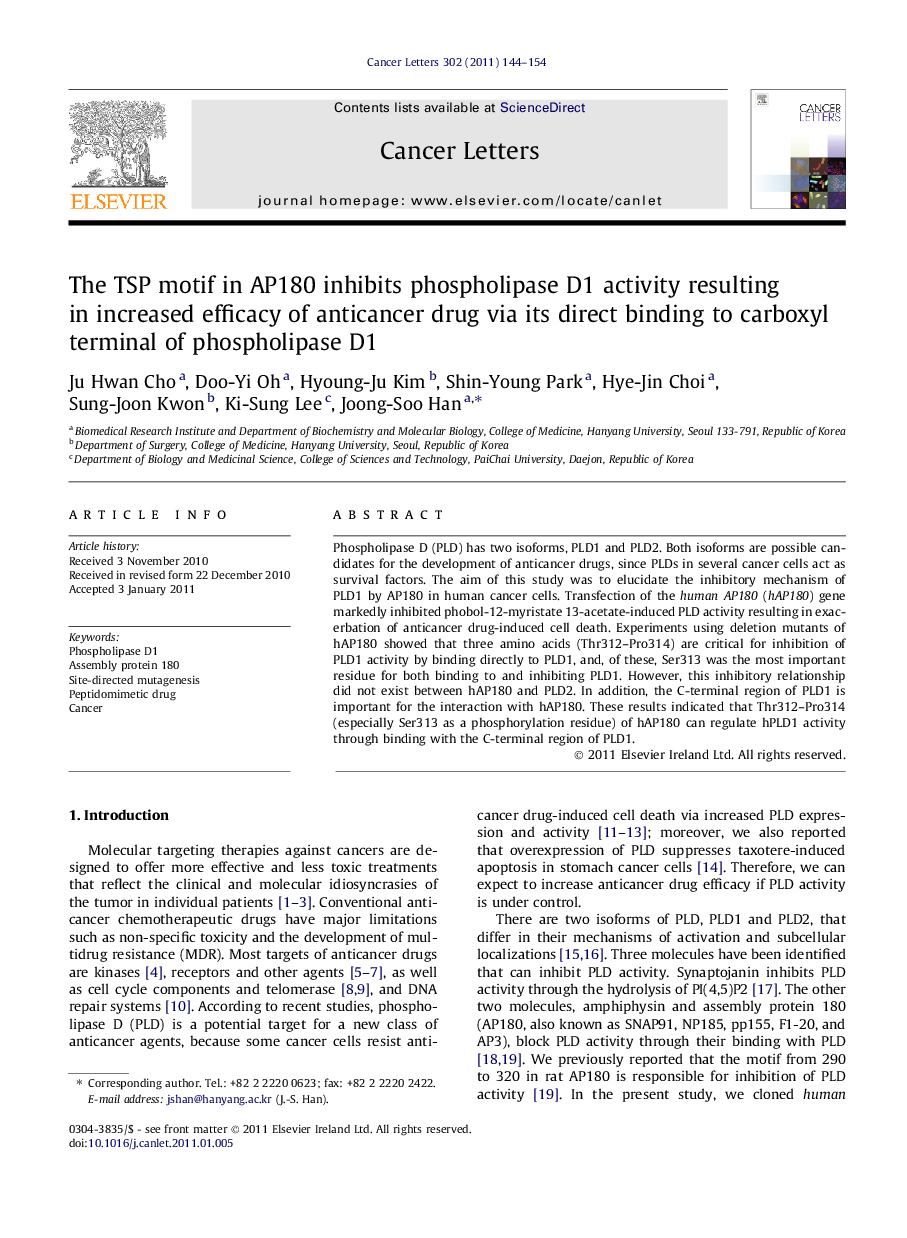| Article ID | Journal | Published Year | Pages | File Type |
|---|---|---|---|---|
| 2113719 | Cancer Letters | 2011 | 11 Pages |
Phospholipase D (PLD) has two isoforms, PLD1 and PLD2. Both isoforms are possible candidates for the development of anticancer drugs, since PLDs in several cancer cells act as survival factors. The aim of this study was to elucidate the inhibitory mechanism of PLD1 by AP180 in human cancer cells. Transfection of the human AP180 (hAP180) gene markedly inhibited phobol-12-myristate 13-acetate-induced PLD activity resulting in exacerbation of anticancer drug-induced cell death. Experiments using deletion mutants of hAP180 showed that three amino acids (Thr312–Pro314) are critical for inhibition of PLD1 activity by binding directly to PLD1, and, of these, Ser313 was the most important residue for both binding to and inhibiting PLD1. However, this inhibitory relationship did not exist between hAP180 and PLD2. In addition, the C-terminal region of PLD1 is important for the interaction with hAP180. These results indicated that Thr312–Pro314 (especially Ser313 as a phosphorylation residue) of hAP180 can regulate hPLD1 activity through binding with the C-terminal region of PLD1.
